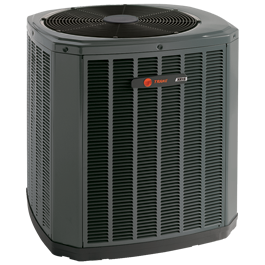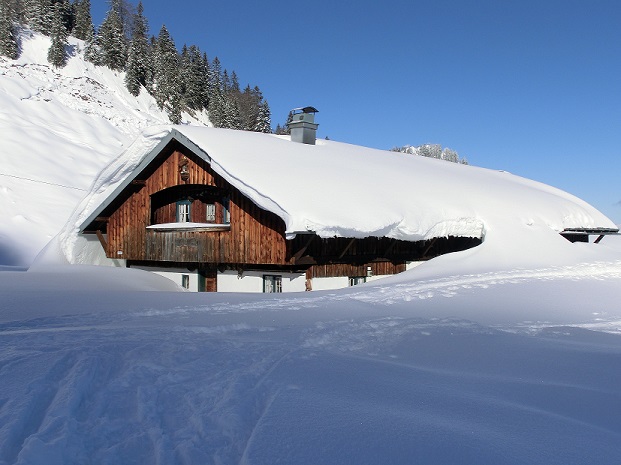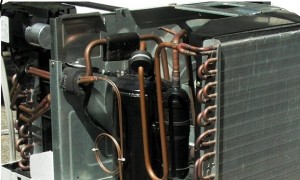Trane Heat Pump Comparison – A Review Of Residential Trane Heat Pumps
 How Best To Compile a Residential Trane Heat Pump Comparison and Review
How Best To Compile a Residential Trane Heat Pump Comparison and Review
This Trane heat pump comparison from American Cooling and Heating is designed to provide Arizona residents with a solid, fact-based review and comparison from three distinct groups of Trane H/P equipment. To make the information worthwhile to prospective buyers, we are not going to poke around with another list of exact system specs. You can find that nearly anywhere on the Internet, including the highly informative Trane HVAC products page on this very website.
This comparison focuses on a close-up of how various Trane heat pump units compare to the competition, to one another, and to the industry as a unique heating and cooling solution for Arizona homeowners. Seven distinct units from three distinct Trane HP model ranges are included in the review:
- The top end Trane XL16i and Trane XL20i
- The mid-range Trane XB13, Trane XL15i and Trane XR15
- The low end Trane XB13 and the Trane XR13.
Kicking Off the Trane HP Review and Comparison
Before dipping into the unique components of each system, take a moment look at some of the primary features that make Trane an Arizona top-choice in heat pump technology. First, all Trane split system air conditioning and heat pump equipment applies outdoor coil protection via fully louvered panels baked in with a tough powder paint finish. These same units are assembled with weather-resistant screws designed for long-term performance. But most important of all is the patented Trane all-aluminum Spine Fin™ outdoor coil technology. This unique-to-Trane cooling technology assures that all Trane heat pump and air conditioning condensing systems make the most out of heat-transfer and energy-efficient functionality.
So let’s look now at the unique aspects of these Trane HVAC products.
Don’t need a new system, get
“10% Discount On All ACH-performed Maintenance Services”
Offer valid from May 1, 2014 to May 31, 2014
Trane Heat Pump Comparison: What Are the Unique Features of the Trane XL20i and the Trane XL16i
When reviewing Trane residential H/P equipment, the XL16i and the XL20i exceed the bill for top end heating and cooling equipment. What makes them stand out above the competition?
- Fan Speed – A multi-stage fan in the XL20i reduces energy consumption during mild weather conditions. This saves you money.
- Superior Warranties – Crafted for extended durability, both units pack a 12-year limited warranty on the compressor and a 10-year limited warranty on the outdoor coil and on all internal functional parts*. Buyers of these systems can also purchase an Optional Extended Warranty on parts, labor, or parts and labor.
- Advanced Technology – Both the XL16i and the XL20i take advantage of Trane ChargeAssist technology, which helps ensure quality performance on just the right amount of refrigerant
- AND, of course, the patented Trane all-aluminum Spine Fin™ outdoor coil technology.
Trane H/P Comparison: Unique Features of the Trane XB13, Trane XL15i and Trane XR15
So what features can set a mid-range heat pump apart from the pack? Things like a 12-year compressor warranty always standout as unique in the residential H/P marketplace. Efficient noise control also makes a difference. And in some Arizona homes, even the profile of heat pump unit can become very important. Here’s how the XB13, XR15 and XL15i stand out:
- Superiority Warranty Protection – Although only the Trane XL15i is backed by Trane’s 12-year compressor warranty, both the XB13 and the XR15 kick off with a Trane 10-year limited warranty on the compressor, outdoor coil, and all internal functional parts*. Any of the systems can be upgraded to the Trane Optional Extended Warranty program and/or an optional transferability of your Registered Limited Home System Warranty.
- Short Profile – Although the XL15i does not fit short profile heat pump specs, the XB13 and the XR15 come in with a height of only 29”. That’s a ready-made solution for Arizona homes dealing with tight HVAC installation quarters.
- Noise Management – Both the Trane XR15 heat pump and the Trane XL15i heat pump ship with an installed sound blanket that effectively reduces the noise level of the compressor
- AND, or course, the patented Trane all-aluminum Spine Fin™ outdoor coil technology.
Current system reasonably new but in need of a tune-up? Call for a
“10% Discount On All ACH-performed Maintenance Services”
Offer valid from May 1, 2014 to May 31, 2014
Trane Heat Pump Comparison: Looking For The Best In Low End A/C Technology With the Trane XB13 and the Trane XR13
Although only certain Trane air conditioning systems take advantage of two-stage compressor efficiency, every Trane HP or Trane A/C makes use of Climatuff® compressor  technology. For power and effective performance, the XR13 and the XB13 offer a slightly above average SEER rating of up to 14.50 with an HSPF of up to 8.50. Cap it off with economical operation and durable construction, and either of these two heat pumps automatically standout as reliable and cost-effective. But let’s pinpoint at least three unique functions that make the low end Trane cooling solution a wise choice for some AZ residents:
technology. For power and effective performance, the XR13 and the XB13 offer a slightly above average SEER rating of up to 14.50 with an HSPF of up to 8.50. Cap it off with economical operation and durable construction, and either of these two heat pumps automatically standout as reliable and cost-effective. But let’s pinpoint at least three unique functions that make the low end Trane cooling solution a wise choice for some AZ residents:
- Profile – Sometimes height matters. Both the Trane XB13 H/P and the Trane XR13 H/P family sport short profiles ranging from a mere 29” up to 41”. That’s a standard beater in the industry that works well for many AZ homeowners.
- Extended Warranty – Although these two Trane low-end models already come with the Trane advanced 10-year limited warranty on compressor, outdoor coil, and internal functional parts, they also include the option for buyers to reap the benefits of buying a Trane Extended Warranty on labor and other costs. It’s a valuable asset available to every buyer of a new Trane heat pump system (1).
- AND, of course, the XB13 and the XR13 take advantage of the patented Trane all-aluminum Spine Fin™ outdoor coil technology.
American Cooling and Heating Heat Pump Solutions
The core of this Trane Heat Pump Comparison ignores the basics of SEER and HSPF figures. Typically the name of the unit reflects the SEER rating of the unit. Residential Trane H/P systems are available in sizes ranging from 1.5 to 5 tons. Your ACH estimator will advise you as to the best system suited to your Arizona home.
American Cooling and Heating sales, installs and services all major brands of HVAC equipment. Now is the time to take advantage of the Company’s 2014 summer sale, but if your system is already up-to-par but needs a bit of a tune-up, call now and receive a:
“10% Discount On All ACH-performed Maintenance Services”
Offer valid from May 1, 2014 to May 31, 2014
ACH servicing and installing all major brands of heating and cooling equipment for over 25 years.
Disclaimer: This article and its content do not constitute legal, financial, technical, or medical advice. While every reasonable effort has been made to ensure that this document is correct at the time of publication, the company and its employees and agents disclaim any and all liability to any person in respect of anything or the consequences of anything done or omitted to be done in reliance upon the whole or any part of this article and its content. All trademarks, logos, and associated content displayed are the property of their respective owners.
* If your Trane HVAC product is not registered within 60 days of installation, the terms of warranty coverage fall back to Trane’s Base Limited Warranty specifications. Ask your ACH dealer to provide full warranty options at the time of your purchase. And remember: Trane warranties are for residential buyers only and even then some exclusions may apply.
1) http://www.trane.com/residential/products/heat-pumps/xb13-heat-pumps


